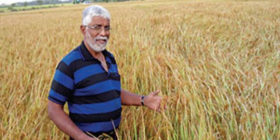It is day two after Saturday’s devastating earthquake crippled normal life across Nepal. Measuring 7.8 on the Richter scale and with more than 1800 people dead, it was the worst earthquake to hit the country in 80 years. The number of injured is close to 5000 and many braved the freezing temperature to sleep outside on the pavements on Saturday night as they feared more aftershocks.
The epicenter of this earthquake was near the city of Pokhra, lying in the northwest of Kathmandu. After the initial shock, there were aftershocks measuring upto 6.6 on the Richter scale and impacted neighbouring countries like India, Bangladesh and Tibet as well.
As the death toll continues to rush and aid is pouring in from across the world, one primary question is that why is this region so prone to earthquakes. Is there a scientific reason or is it sheer coincidence.
Well actually you can blame on the strategic positioning on Nepal for most of this gruesome and widespread destruction and loss of life. Nepal’s southern borders comprise of the area that essentially was the point where the Indian sub-continent collided and joined with the Eurasian plat nearly 40-50 million years ago. This collision created the Indus-Yarlung suture zone.
As a direct impact of this collision, the peaks in the region are still said to be rising by almost one centimetre every year. Given the fact it was not a happy marriage, stress and pressure continues to build at the point where the Indian plate is trying to push its way up north. An earthquake is the point where this pressure becomes unmanageable and releases huge amount of energy.
Another factor that worsened the impact in Kathmandu and its neighbouring areas is the fact that this region lies just above a 300-metre deep black clay layer. In times of severe quake conditions, soil liquefaction takes place and it almost becomes like a quicksand, gulping buildings in bulk.
But the question now is Saturday’s quake a precursor to more devastating quakes in the region in days to follow? Environmentalists opine that given the population pressure and the pollution issues, the risks of further quakes stand exacerbated.







Leave a reply